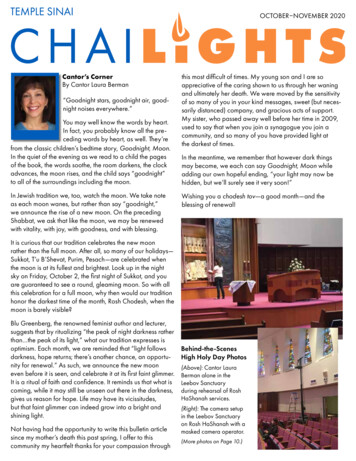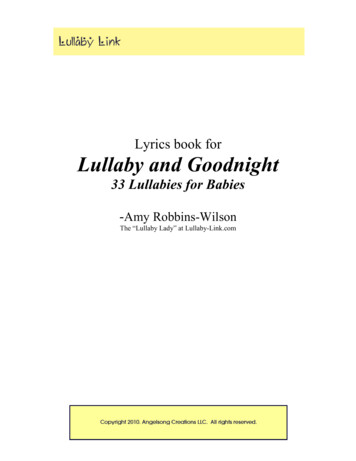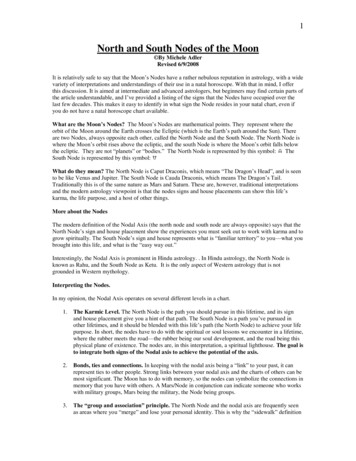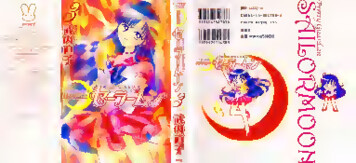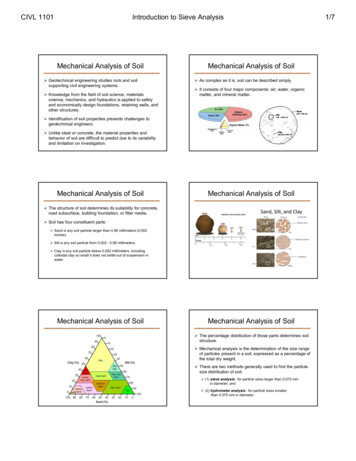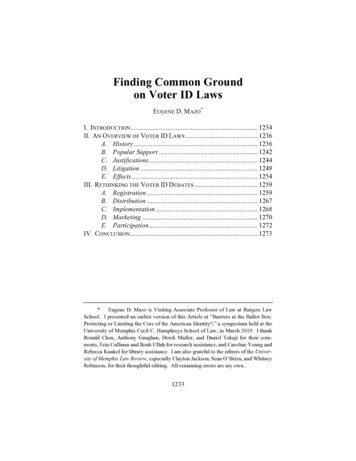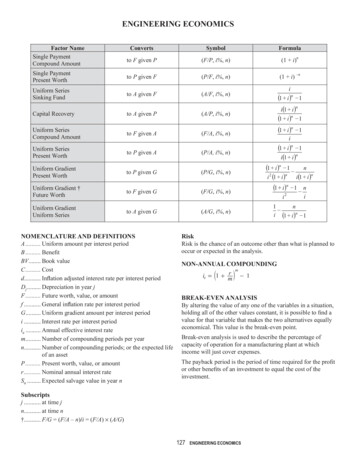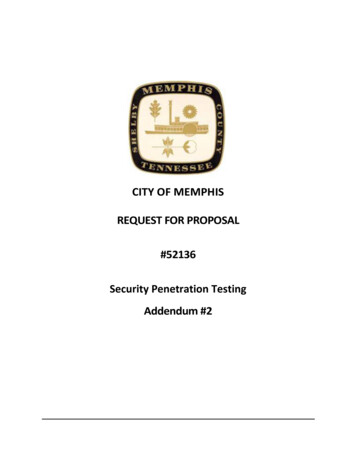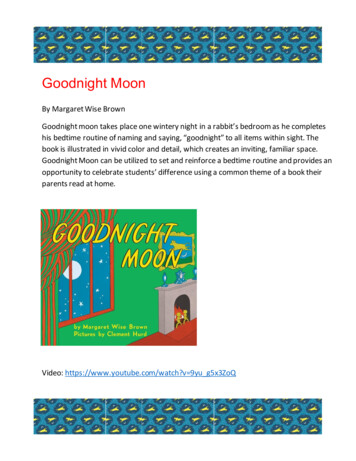
Transcription
Goodnight MoonBy Margaret Wise BrownGoodnight moon takes place one wintery night in a rabbit’s bedroom as he completeshis bedtime routine of naming and saying, “goodnight” to all items within sight. Thebook is illustrated in vivid color and detail, which creates an inviting, familiar space.Goodnight Moon can be utilized to set and reinforce a bedtime routine and provides anopportunity to celebrate students’ difference using a common theme of a book theirparents read at home.Video: https://www.youtube.com/watch?v 9yu g5x3ZoQ
Reading the StoryTips for Reading:Use a calm, soft tone.When introducing the book, ask the children what they think the book is about.Ask, “What is the time of day? What is the location? How do you know?”Ask the children about their bedtime routines.Ask the children what helps them sleep.
ActivitiesCircle Time: Bedtime RoutinesBring the children to the carpet and have them sit in a circle, in order to create a quiet,intimate setting. Use a soft voice to represent bedtime as a quiet, calm time and discusshow we use our “bedtime voices.” Use the tips for reading outlined above.At the end of the story talk about bedtime routines and have the students giveexamples of what they do to get ready for bed. Reinforce independent behaviors byasking students to provide steps for each activity, i.e. bathing (fill the tub, check thewater temperature, add bubbles, wash my face, wash my body, etc.), brushing teeth,changing into pajamas. When the students identify routines that are different or in adifferent order, celebrate the differences and emphasize how we may have differentways to complete the tasks: what is important is completing the task! This is a simpleopportunity to teach tolerance.Movement/Art Activity: Telling TimeBring the children’s attention to the clock in Goodnight Moon and how the time changesby 10 minutes on each page. Have the students try to create the time by standing andusing their arms and body to create the time on the page; students can also work inpairs. Next, assist students with creating the time on their Judy clock (see materials) andcall their attention to the small and big number. Have the students identify thenumbers. Repeat these steps as you flip the pages and identify that the time on theclock changes each time. As students learn to tell time, have students identify what timeit is on the pages as you go through the book. As students learn, you can even ask themto identify the time on the page when you are engaged in other Goodnight Moonactivities!
Art Activity: Paper Moon PhasesPrint out and laminate the picture of the moon phases below for each child. Talk aboutthe different moon phases (full, crescent, half, gibbous). Assist children with drawing,coloring, and cutting out the four shapes reviewed. Allow students to pick their favoritecolor of construction paper for the background to their moon phases. Point out thevariety of choices and take this time, again, to celebrate differences. Discuss how thereis no “better” or “bad” choice; they are all equal! Next, have your students glue theirmoon phases to their colored paper and assist them with identifying and writing thephase next to the respective moon. If the moon is visible, walk your students outside orfind the moon from a window. Have the students identify what phase the moon appearsto be at that time (or closest phase).
Materials and HandoutsClassroom set of Judy assPack/dp/0768218489/ref sr 1 5?ie UTF8&qid 1501803895&sr 85&keywords judy clockArt MaterialsConstruction Paper- variety of colorsWhite paperCrayonsScissorsGlue Sticks
hirteen.org/r eadytolearn/13 ThemeArchive/social/bedtime.pdf
Goodnight Moon By Margaret Wise Brown Goodnight moon takes place one wintery night in a rabbit’s bedroom as he completes his bedtime routine of naming and saying, “goodnight” to all items within sight. The book is illustrated in vivid color and detail, which creates an inviting, familiar space. Goodnight Moon can be utilized to set and reinforce a bedtime routine and provides an .

